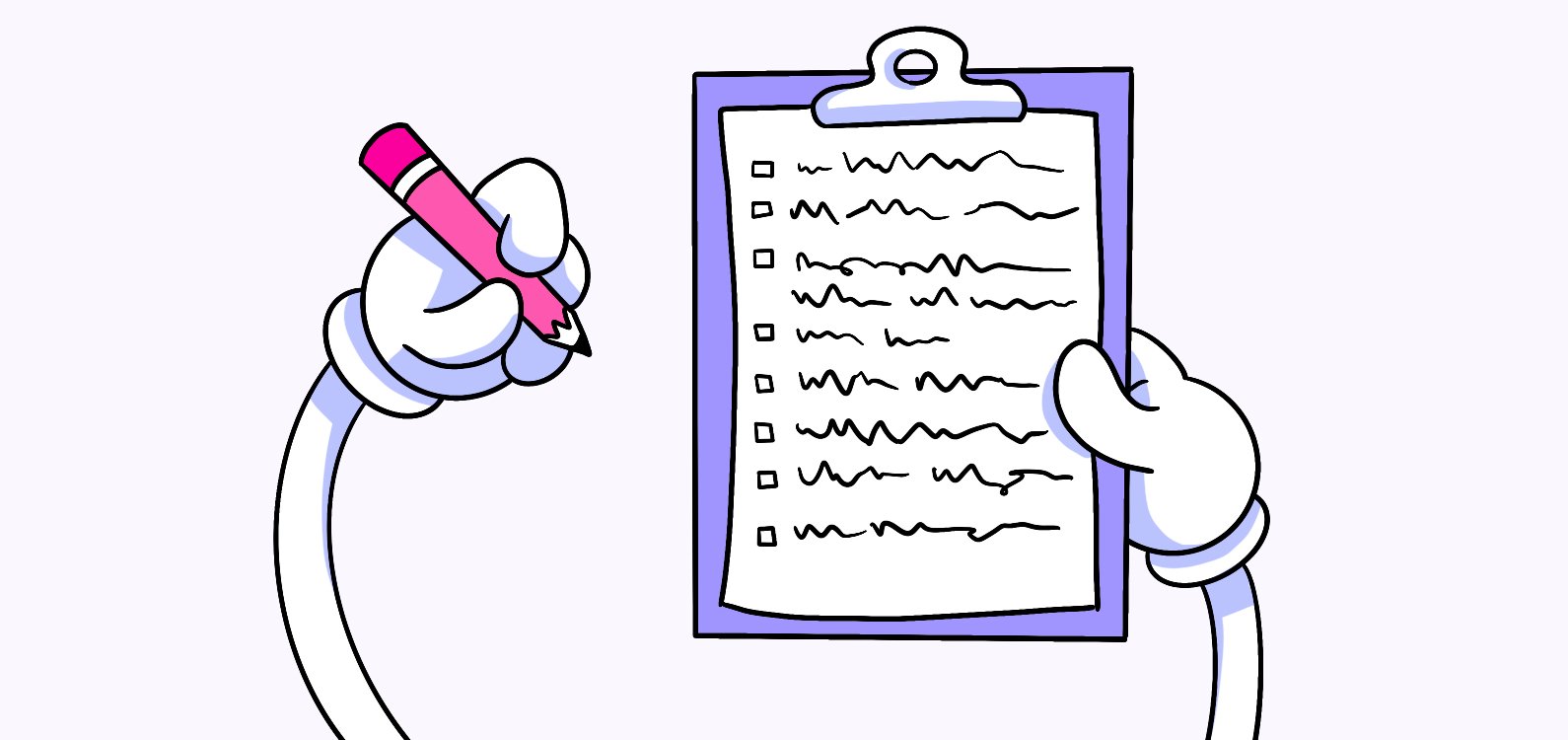Law of Uniform Connectedness: Cohesive Visual Experiences
Understanding the Law of Uniform Connectedness: A Comprehensive Guide. Are you curious to learn about the Law of Uniform Connectedness? In this comprehensive guide, we will delve into the various aspects of this intriguing concept. From its definition and basic principles to its applications in visual design and communication, we will explore it all. So, let’s start our journey of understanding the Law of Uniform Connectedness!
🔩 The Nuts and Bolts:
- The Law of Uniform Connectedness groups connected elements. Our brains perceive visually connected elements, through proximity, color, or orientation, as part of a single unit, enhancing our cognitive efficiency.
- This principle stems from Gestalt psychology. Introduced by Wolfgang Köhler in the early 20th century, the Law of Uniform Connectedness explains how our minds organize and interpret visual information.
- It improves user experience in design. In user interface design, visually connecting related elements helps users navigate complex interfaces intuitively and with ease, enhancing overall interaction.
- Color and proximity are key visual cues. Elements that share color or are positioned closely are perceived as related, allowing users to quickly identify patterns and associations.
- Connectedness aids in perception and memory. Visually connected elements are not only perceived as belonging together, but they also help with memory recall and cognitive processing by creating stronger mental associations.
- Excessive visual connections can lead to clutter. While the Law of Uniform Connectedness is powerful, overusing it can result in overwhelming designs, where excessive connections cause confusion rather than clarity.
Defining the Law of Uniform Connectedness
The Law of Uniform Connectedness is a fundamental principle in psychology and design. It states that elements that are visually connected are perceived as a single unit. This connection can occur through various means, such as proximity, color, or orientation.
The Basic Principles
At its core, the Law of Uniform Connectedness emphasizes that our brains naturally seek patterns and relationships between visual elements. When elements share certain visual attributes, our brains perceive them as belonging together. This phenomenon allows for efficient perception and cognition.
Let’s delve deeper into the basic principles of the Law of Uniform Connectedness. One of the key aspects is proximity. When elements are close to each other, our brains automatically group them together. For example, imagine a series of dots scattered on a page. If some of these dots are closer to each other than others, we perceive them as forming distinct groups or clusters.
Color is another important factor in the Law of Uniform Connectedness. When elements share the same color, regardless of their shape or size, we tend to perceive them as connected. This can be observed in various contexts, from a collection of objects with the same color to a graph where data points of the same color are connected by lines.
Orientation is yet another element that plays a role in the Law of Uniform Connectedness. When elements have a similar orientation, our brains perceive them as connected or related. This can be seen in patterns such as lines or shapes that are aligned in a particular direction.
Historical Context and Development
To fully grasp the significance of the Law of Uniform Connectedness, it’s essential to understand its historical context and development. This principle was first proposed by psychologist Wolfgang Köhler in the early 20th century as part of his research on Gestalt psychology. Gestalt psychology focuses on how our minds organize and interpret the world around us.
Köhler’s work on the Law of Uniform Connectedness was groundbreaking, as it shed light on the underlying principles of visual perception. He conducted experiments using simple geometric shapes and demonstrated how our brains naturally group visually connected elements together, even when they are not physically connected.
Since its inception, the Law of Uniform Connectedness has been widely studied and applied in various disciplines, particularly in the fields of visual perception, cognitive psychology, and design. Researchers have conducted numerous experiments to further explore the nuances of this principle and its implications for human perception.
Its impact has extended beyond academic realms, influencing practical applications in areas such as user experience design and communication strategies. Designers often utilize the Law of Uniform Connectedness to create visually cohesive and engaging interfaces. By strategically connecting elements through visual attributes, they enhance the user’s understanding and navigation of a website or application.]
In the realm of communication,
The Law of Uniform Connectedness also plays a significant role. Advertisers and marketers leverage this principle to create visually compelling campaigns that capture the audience‘s attention and convey a cohesive message. By connecting various elements in an advertisement, such as images, text, and colors, they create a unified visual experience that resonates with viewers.
In conclusion, the Law of Uniform Connectedness is a powerful principle that governs how our brains perceive and interpret visual information. By understanding and applying this principle, we can create more effective designs, enhance communication strategies, and ultimately improve the overall user experience.
Make your design decisions count.
Subscribe to Design Under Pressure. Get insights, UX metrics, and tools for bold, informed design.
We respect your inbox. Just insights. No fluff. Privacy Policy.
The Psychological Perspective
Now, let’s explore the psychological aspects of the Law of Uniform Connectedness. Understanding how our minds perceive and group visual information is key to comprehending this principle.
Perception is the process by which we interpret sensory information and make sense of the world around us. It is a complex cognitive process that involves the integration of various sensory inputs. When it comes to visual perception, our brains automatically group related visual elements together. This grouping process allows us to organize and make sense of the vast amount of visual information that bombards us every day.
The Law of Uniform Connectedness assists in this grouping process by providing cues through connected attributes. It states that elements that are visually connected to each other are perceived as belonging together. This principle helps us quickly comprehend complex scenes and make sense of the visual information presented to us.
For example, if we see a group of objects that share the same color, our brains perceive them as belonging together. This grouping allows us to easily identify patterns, relationships, and associations in our visual environment. It helps us navigate and understand the world around us more efficiently.
Perception and Grouping
Our ability to perceive and group visual elements is influenced by various factors. One such factor is proximity, which refers to the distance between elements. When elements are close to each other, our brains perceive them as belonging together. This principle is closely related to the Law of Uniform Connectedness, as it also relies on the concept of connectedness to determine grouping.
Another factor that influences perception and grouping is similarity. When elements share similar attributes, such as color, shape, or size, our brains group them together. This grouping allows us to organize and categorize visual information more effectively.
Additionally, the Law of Uniform Connectedness plays a role in the perception of visual hierarchy. Visual hierarchy refers to the organization of visual elements in a way that guides the viewer’s attention and conveys the relative importance of each element. Elements that are visually connected to each other are often perceived as being more important or belonging to a higher level in the hierarchy.
Cognitive Processes Involved
At a cognitive level, the Law of Uniform Connectedness plays a vital role in how we process and understand information. When elements are perceived as connected, our minds treat them as a single entity. This cognitive process aids in memory recall and efficient cognitive processing.
When we encounter visually connected elements, our brains create mental associations between them. These associations help us remember information more easily and retrieve it when needed. For example, if we see a group of objects that are visually connected, such as a set of interlocking puzzle pieces, we are more likely to remember them as a whole rather than as individual pieces.
Furthermore, the Law of Uniform Connectedness influences how we perceive visual hierarchies. Elements that are visually connected to each other are often perceived as being more important or belonging to a higher level in the hierarchy. This principle is widely used in design and communication to draw attention to specific elements and convey their relative significance.
In conclusion, the Law of Uniform Connectedness is a fundamental principle in visual perception. It assists in the grouping of visual elements, allowing us to quickly comprehend complex scenes and make sense of the visual information presented to us. This principle also plays a crucial role in cognitive processes, aiding in memory recall and efficient cognitive processing. Understanding the psychological aspects of the Law of Uniform Connectedness provides valuable insights into how our minds perceive and interpret visual information.
Laws of UX
Applications in Visual Design
The Law of Uniform Connectedness is a valuable tool in visual design, allowing designers to create visually cohesive and engaging experiences for users.
Enhancing User Experience
In user experience design, the Law of Uniform Connectedness helps create intuitive and efficient interfaces. When elements with related functions are visually connected, users can quickly understand their relationships and navigate through the interface with ease.
By utilizing this principle, designers can enhance user experience by reducing cognitive load and providing clear visual cues to guide users through complex interactions.
Principles for Effective Design
Designers can harness the power of the Law of Uniform Connectedness by incorporating it into their design principles. Creating visual connections between elements that should be perceived as related helps establish a sense of coherence and unity in the design.
Strategically using color, proximity, lines, or other visual attributes to connect relevant elements can significantly impact how users perceive and interact with a design, making it more visually appealing and memorable.
The Role in Communication
The Law of Uniform Connectedness greatly influences how we perceive and interpret visual messages in various forms of communication.
Visual Communication Strategies
In visual communication, be it in graphic design, advertising, or data visualization, the Law of Uniform Connectedness offers valuable strategies for effectively conveying messages.
By connecting related elements through visual attributes, designers and communicators can create strong visual associations and facilitate the audience‘s understanding of complex information. This principle ensures that visuals enhance the meaning and impact of the message being communicated.
Impact on Message Interpretation
The Law of Uniform Connectedness can significantly affect how we interpret messages. When elements appear connected, we perceive them as a cohesive unit. This perception often influences the meaning we assign to the message or the emotions elicited by it.
Additionally, strategically utilizing the Law of Uniform Connectedness in visual communication can help highlight key information, guide the viewer’s attention, and enhance overall message comprehension.
Critiques and Limitations of the Law
Like any psychological principle, the Law of Uniform Connectedness has its critiques and limitations that warrant consideration.
Potential Drawbacks
While the Law of Uniform Connectedness is generally beneficial in design and communication, excessive visual connections can result in visual clutter and confusion. It is crucial to strike a balance between creating meaningful connections and avoiding overwhelming the viewer.
Areas for Further Research
As with any scientific concept, there is always room for further exploration and research. The Law of Uniform Connectedness continues to be an area of investigation, with researchers seeking to uncover new insights and applications.
Examining the potential interactions between the Law of Uniform Connectedness and other psychological principles could help deepen our understanding of how our minds interpret visual information and provide new avenues for creative expression.
There you have it—a comprehensive guide to understanding the Law of Uniform Connectedness. From its definition and historical context to its psychological implications and practical applications in design and communication, we’ve covered it all.
So, the next time you appreciate a visually cohesive design or find yourself effortlessly grasping a complex message, remember the power of the Law of Uniform Connectedness at play. It’s a fascinating principle that influences how we perceive, understand, and connect with the world around us.
Law of Uniform Connectedness FAQs
The Law of Uniform Connectedness is a principle in psychology and design that states visually connected elements are perceived as a cohesive unit. This connection can be established through visual attributes like proximity, color, or orientation, helping our brains group related elements.
In design, this law helps create cohesive visual experiences by connecting related elements, such as buttons, icons, or menus. By linking similar functions through visual cues, designers improve the user interface, making navigation more intuitive and reducing cognitive load.
Proximity refers to how close elements are to each other. When objects are close together, our brains automatically perceive them as related or part of a group, aiding in quick visual comprehension.
This law helps improve user experience by reducing confusion and making interfaces more navigable. By visually connecting related features or elements, designers create intuitive flows that make complex interactions easier for users to grasp.
Color is a crucial factor in this principle. When objects share the same color, regardless of their shape or position, they are perceived as connected, allowing users to identify relationships between elements quickly.
Yes, overuse can lead to visual clutter and confusion. If too many elements are visually connected, it can overwhelm the viewer, making it difficult to discern meaningful relationships or navigate the design effectively.
This principle is widely used in website and app design, advertising, and communication strategies. By connecting related visual elements through proximity, color, or lines, designers make interfaces clearer and help audiences process complex information more efficiently.



